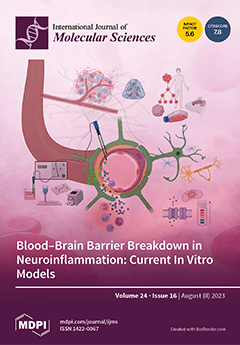Giant arachnoid granulations (GAGs) are minimally investigated. Here, we systematically review the available data in published reports to better understand their etiologies, nomenclature, and clinical significance. In the literature, 195 GAGs have been documented in 169 persons of varied ages (range, 0.33 to
[...] Read more.
Giant arachnoid granulations (GAGs) are minimally investigated. Here, we systematically review the available data in published reports to better understand their etiologies, nomenclature, and clinical significance. In the literature, 195 GAGs have been documented in 169 persons of varied ages (range, 0.33 to 91 years; mean, 43 ± 20 years; 54% female). Prior reports depict intrasinus (i.e., dural venous sinus, DVS) (84%), extrasinus (i.e., diploic or calvarial) (15%), and mixed (1%) GAG types that exhibit pedunculated, sessile, or vermiform morphologies. GAG size ranged from 0.4 to 6 cm in maximum dimension (mean, 1.9 ± 1.1 cm) and encompassed symptomatic or non-symptomatic enlarged arachnoid granulations (≥1 cm) as well as symptomatic subcentimeter arachnoid granulations. A significant difference was identified in mean GAG size between sex (females, 1.78 cm; males, 3.39 cm;
p < 0.05). The signs and symptoms associated with GAGs varied and include headache (19%), sensory change(s) (11%), and intracranial hypertension (2%), among diverse and potentially serious sequelae. Notably, brain herniation was present within 38 GAGs (22%). Among treated individuals, subsets were managed medically (19 persons, 11%), surgically (15 persons, 9%), and/or by endovascular DVS stenting (7 persons, 4%). Histologic workup of 53 (27%) GAG cases depicted internal inflammation (3%), cystic change consistent with fluid accumulation (2%), venous thrombosis (1%), hemorrhage (1%), meningothelial hyperplasia (1%), lymphatic vascular proliferation (1%), and lymphatic vessel obliteration (1%). This review emphasizes heterogeneity in GAG subtypes, morphology, composite, location, symptomatology, and imaging presentations. Additional systematic investigations are needed to better elucidate the pathobiology, clinical effects, and optimal diagnostic and management strategies for enlarged and symptomatic arachnoid granulation subtypes, as different strategies and size thresholds are likely applicable for medical, interventional, and/or surgical treatment of these structures in distinct brain locations.
Full article
 to open them.
to open them.





